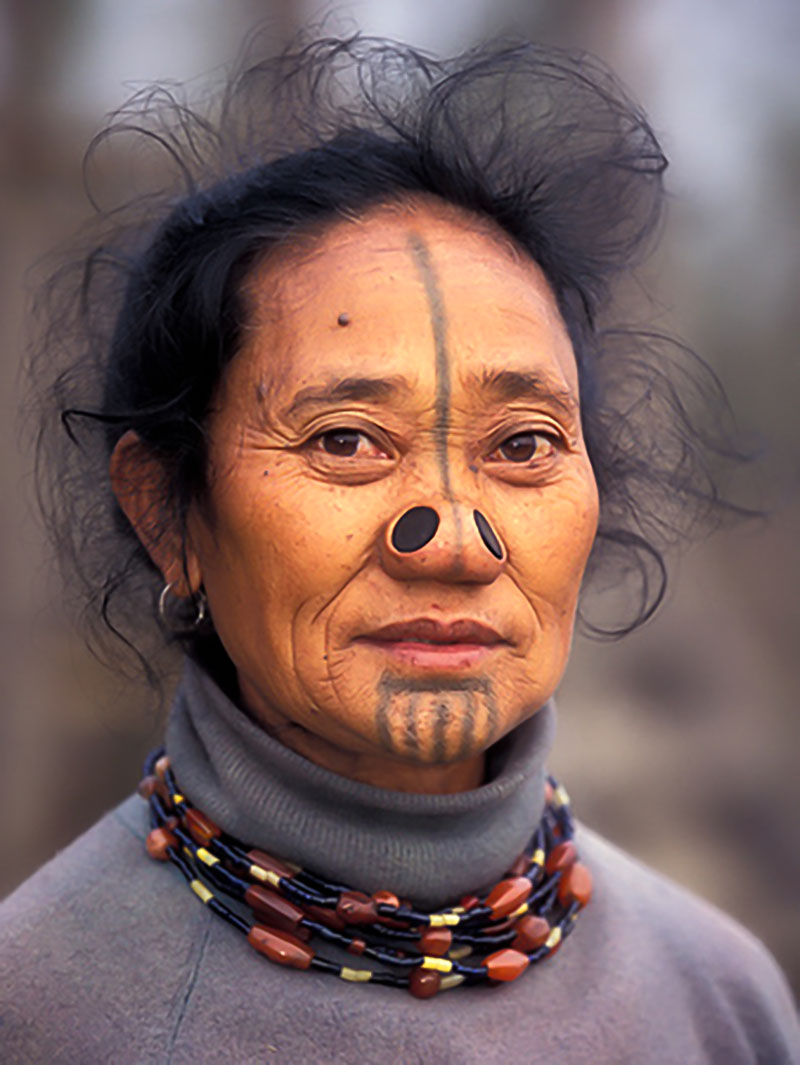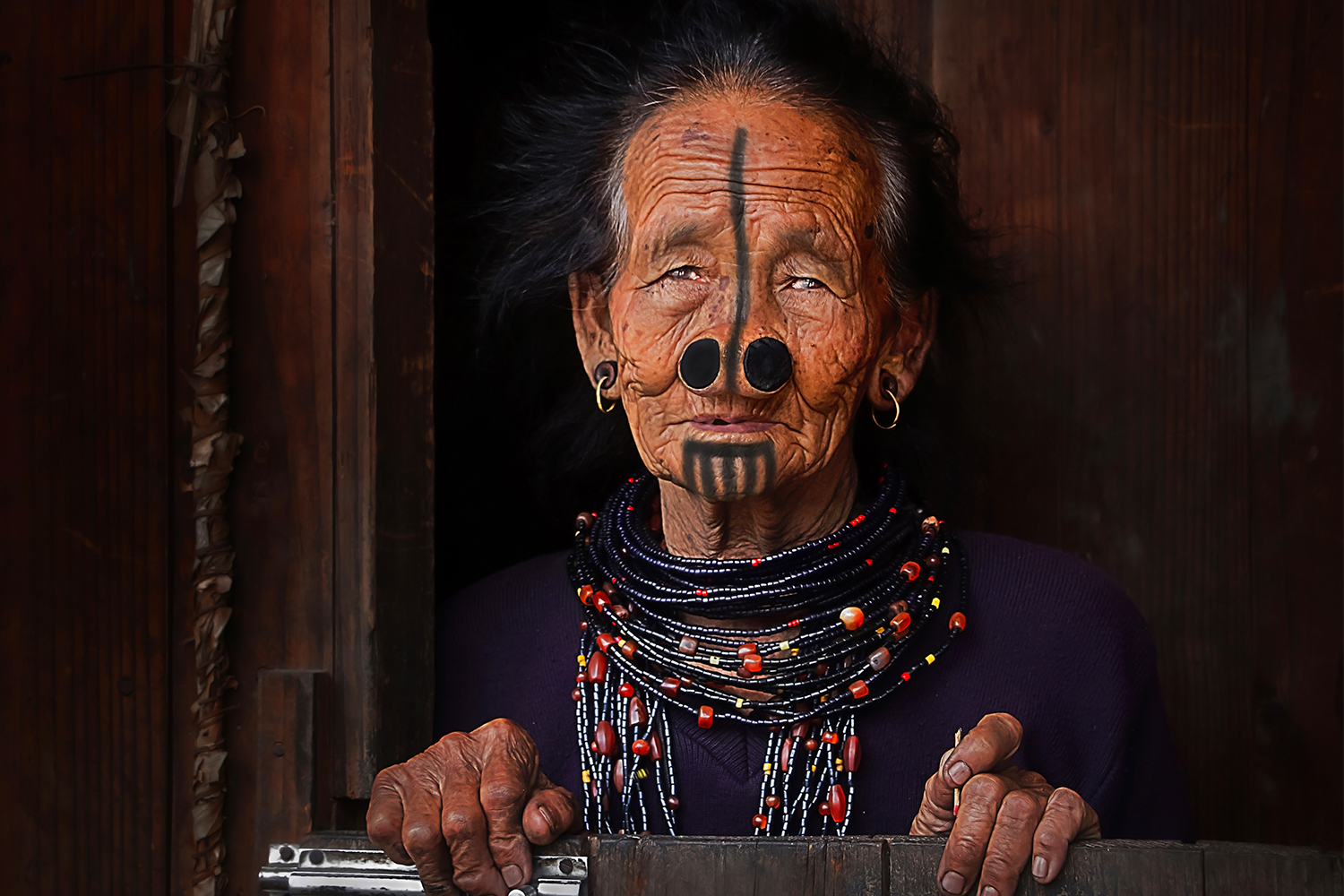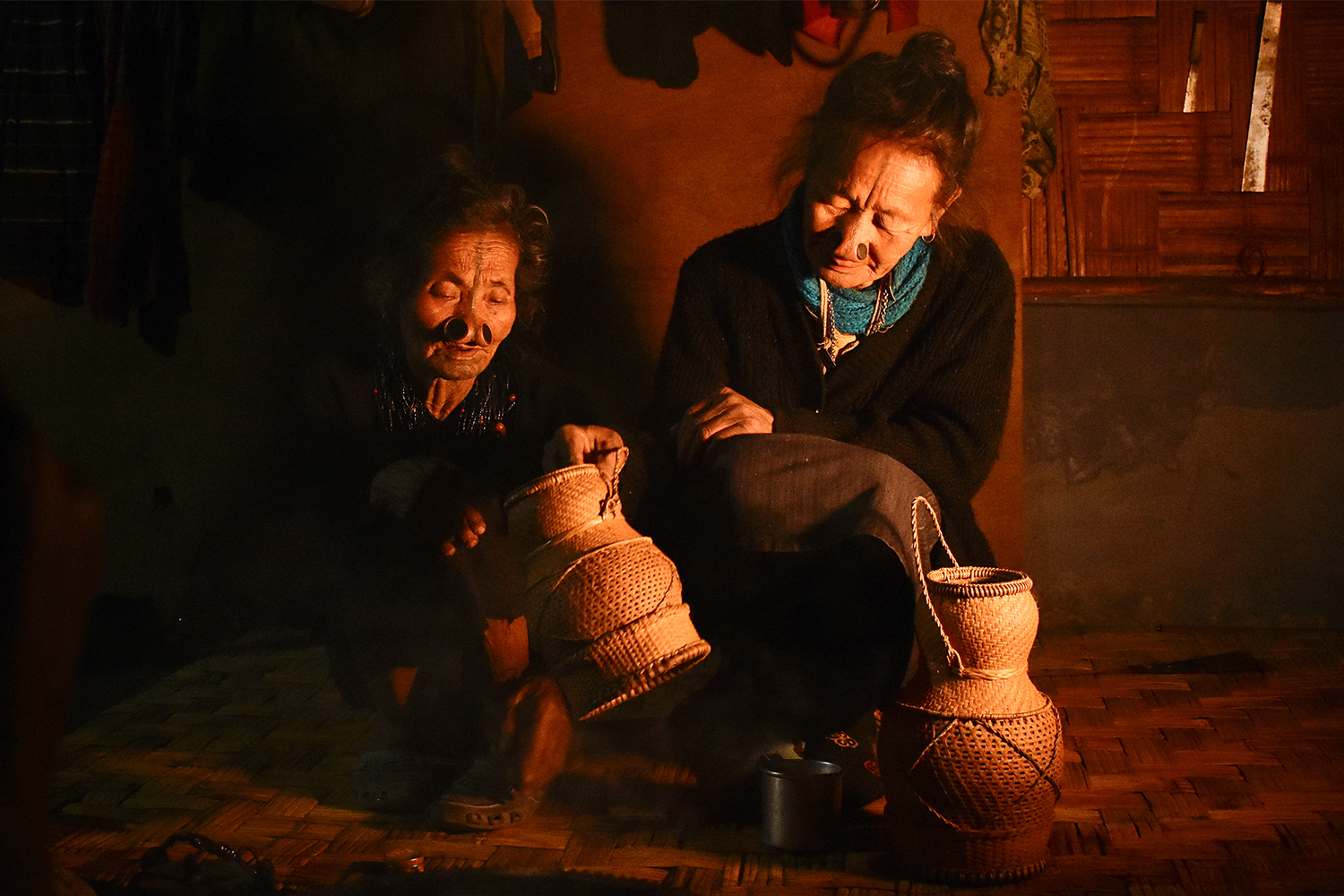ARTICLE
Apatani Tattoos
The ink for the tattoo, called chinyu, was derived from soot mixed with animal fat. The needle was made by tying together several three-headed thorns, known as tipe-tere or iimo-tre, typically derived from the gum arabic tree, or Vachellia nilotica. A small stick hammer, called empiia yakho, was used to tap the needle and make an impression in the skin. The process was carried out in the winter to allow the tattoo to dry quickly.
Between 1971–74, the government, with support from the Apatani Youth Association, declared an end to the practices of facial tattooing and the wearing of nose plugs. These decisions were taken to avoid stigmas and the stereotyping faced by members of the community when they travelled outside the valley.
Bibliography
“Apatani Cultural Landscape.” UNESCO World Heritage Convention, April 15, 2014. Accessed December 26, 2022. https://whc.unesco.org/en/tentativelists/5893/.
Bharadwaj, Shrestha, and Uttam Boruah. “Inking the Identity: A Study of the Apatani Tradition of Tattooing through Bakhtinian Chronotope.” Rupkatha Journal on Interdisciplinary Studies in Humanities 12, no. 5 (2020): 1–6. Accessed December 26, 2022.
Bouchery, Pascal, ed. Dictionary of the Apatani Language: Apatani-English Dictionary (with English-Apatani Index). Poitiers: Universite de Poitiers and Apatani Language Project, 2009.
Dodum, Ranju. “Phasing Out the Tattoo.” Dawnlit Post, November 5, 2017. Accessed December 26, 2022. https://thedawnlitpost.com/2017/11/phasing-out-the-tattoo/.
Kalita, Kangkan. “Stigma Forcing Apatanis to Discard Nose Plugs, Face Tattoos: IIT-Guwahati Study.” Times of India, August 22, 2022. Accessed December 26, 2022. https://timesofindia.indiatimes.com/city/guwahati/stigma-forcing-apatanis-to-discard-nose-plugs-face-tattoos-iit-guwahati-study/articleshow/93699354.cms
Sen, Tania, Mallick, Sambit and Kipgen, Ngamjahao. “Prohibition on Tradition, Tattooing, and the Apatanis of Arunachal Pradesh.” Asian Journal of Social Science. 51. 54-61. Accessed October 26, 2023.
“Tattooing as Folk Tradition Among the Apatani, Arunachal Pradesh.” INTACH. Accessed December 26, 2022. https://icharchive.intach.org/Detail/objects/6466.









